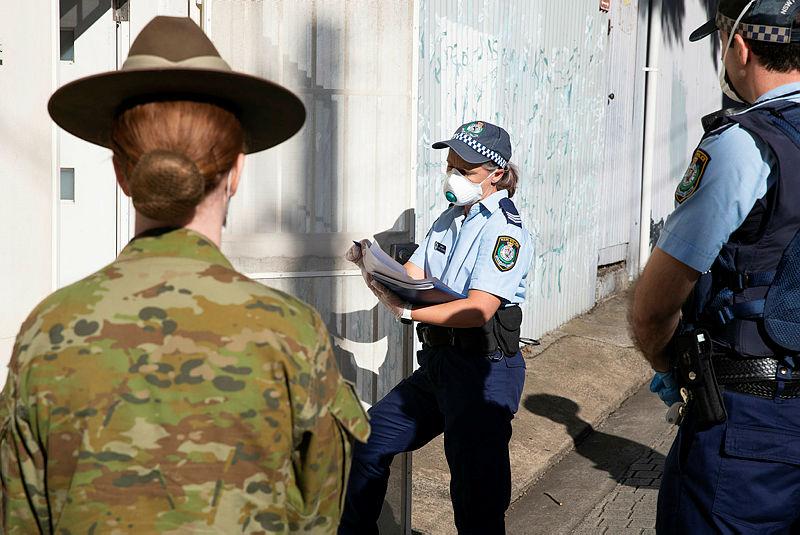
The Covid-19 pandemic has given new and sharper emphasis to questions that were already being raised in the public debate. Why are Australians losing trust in public institutions? Are our security organisations striking the right balance between ‘keeping Australians safe’ and respecting our civil liberties? Have recent changes to national security legislation served to protect us or to threaten our rights? Are authoritarian or democratic countries better at handling crises? Should we look to the United States or China, or neither, for leadership in economic, social and political matters?
Already we have had insights from historians of previous pandemics and earlier economic crises. We can also learn something from the history of rises and falls in public confidence in our intelligence and security agencies.
In the Cold War era of the 1950s and 1960s, the Australian Security Intelligence Organisation had early success in the Petrov affair, but then became partisan, confusing legitimate left-wing dissent with pro-communist subversion, and deficient in its primary role of counterespionage. Some alleged that it had become a political police force. The last federal conference of the Labor Party before it won the 1972 election came within one vote of adopting the abolition of ASIO as official policy.
Instead, Prime Minister Gough Whitlam appointed Justice Robert Marsden Hope to conduct the Royal Commission on Intelligence and Security. Although often described as an inquiry into ASIO, it was a complete reconstruction of the entire intelligence system. Hope set out legislation, administrative structures and operational doctrines designed to ensure that the agencies were effective in defending national security, while being fully accountable for their impact on civil liberties.
Shortly after Hope submitted the last of his reports, the Sydney Hilton Hotel bombing prompted Prime Minister Malcolm Fraser to commission him to conduct a review of the Commonwealth’s protective security arrangements. Hope didn’t investigate the crime itself, but made important recommendations on the relations between the Commonwealth and state governments, between intelligence agencies and state and federal police forces, and between civilian and military authorities when the defence force was called out to support civilian agencies. The report of the review, which can best be seen as a supplement to the royal commission, remains an important foundational document for Australian counterterrorism.
In the late 1970s and early 1980s, politicians, the media and the public debated the merits of Hope’s recommendations and whether governments were acting fast enough, or too fast, to implement them. Some civil libertarians were disappointed that the major political parties welcomed Hope’s recommendation that ASIO be reformed rather than abolished.
Less publicly, but more powerfully, officials in agencies and departments obstructed the challenges Hope’s recommendations posed to their bureaucratic assets and interests. Investigative journalists thrived on frequent leaks of classified documents.
When the Labor Party returned to office in 1983, another series of leaked documents prompted Prime Minister Bob Hawke to appoint Hope to conduct a second inquiry, the Royal Commission on Australia’s Security and Intelligence Agencies. Hope’s original brief was to assess the extent to which the agencies, and their associated departments, were acting in accordance with the recommendations from his first royal commission. In the public mind, however, this task was overtaken by the unexpected inclusion of the so-called Combe–Ivanov affair, which at one point threatened the survival of the Hawke government.
When Hope returned to the original purpose of the second inquiry, he made many recommendations designed to reaffirm and reinforce the directions recommended by the first. From the mid-1980s, as governments implemented the recommendations of all three reviews, the volatile debate around the agencies settled. Implementation was often extremely slow—some recommendations from 1977 came to fruition in 2018—but generally the direction of reform was consistent with Hope’s recommendations.
During the decades in which governments of all persuasions implemented what might be called ‘the Hope model’, public confidence steadily grew. In the early 2000s, when terrorism at home and abroad became a dominant concern, ASIO and the other agencies enjoyed a degree of trust and authority that was unimaginable before Hope’s first inquiry. In recent years, however, the Hope model has been severely challenged, and public trust has, to a degree, been shaken.
This four-part series will discuss Robert Marsden Hope and the qualities and attitudes he brought to the three inquiries; the principles underlying the structures, legislation and operational doctrines that he prescribed; the challenges posed recently to the Hope model; and the bases for reforms to the intelligence agencies when the current crisis has passed.